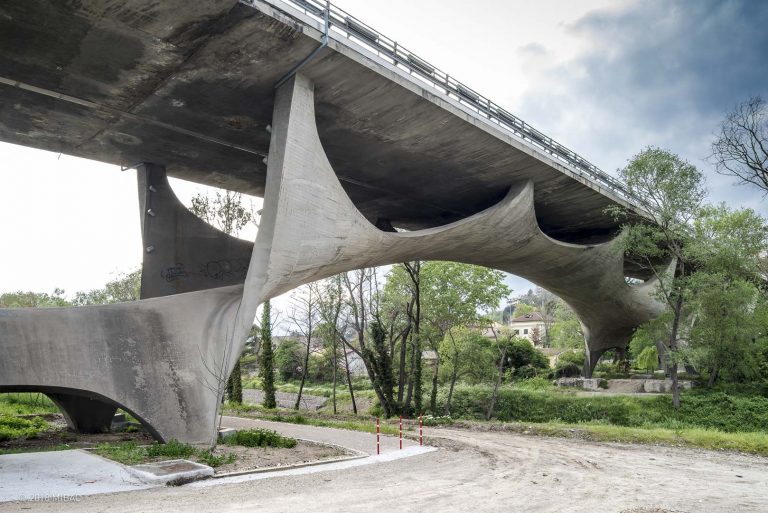
Designed by Archi-Tectonics, the Field Hockey Stadium for the Asian Games is located 5 meters below the ground level. The stadium is designed to be a porous and sculptural element in the park, and it showcases a 125-meter free-span wing roof that covers the lobby and stands. The playing field is set in a recessed oval grass plain that is part of the rolling landscape of Hangzhou Asian Games Park, which is an eco-park spanning 47 hectares and featuring two stadiums for the Asian Games.
“Most stadiums are fortresses,” says Winka Dubbeldam, Founding Partner of Archi-Tectonics. “Ours is more like land art.”

The 5,000-seat stadium is an important part of the landscape and connects the plaza to the playing field, as it mediates the varying elevations between them. Spectators enter through a spacious glass atrium with 35-meter high ceilings, which leads to the playing fields below. The roof and field are shaped like two intersecting ovals, resembling the Seed of Life or the Vesica Piscis, which is a geometric configuration and proportioning system that has been in use since the time of Euclid. The curving stands radiate outward into the curved atrium, creating concentric ripples like those formed by a pebble in water, and extending beyond to the plaza.
The design of the roof was inspired by the traditional Meinong oil paper and bamboo umbrella. It spans the entire distance in one sweep and is held together by a single curving beam, which keeps the mesh in tension. The roof is elevated about a meter above the building, creating a natural draft that brings cool air over the spectators.

“The concrete abutments don’t keep the structure up, they weigh it down and keep the entire construction in tension,” says Dubbeldam.
The entry plaza features a glass lobby that is tucked underneath the sloping shape of the stands. On the ground floor, you’ll find VIP lounges and parking areas that are located under the main lobby. The access is integrated into a slope in the topography, making it easily accessible. In addition to field hockey games, the stadium is designed to host other events such as outdoor film screenings and concerts.
The lobby is enclosed by a double curved glass facade that is supported by an engineered hardwood and steel structure. This creates a dramatic interplay of light and shadow. The building features high-tech forms that are balanced by more traditional local finishes, such as interior walls clad in locally sourced bamboo. The building is designed to be sustainable and rooted in the region’s heritage.
The surrounding landscape was designed by !Melk!, follows a sustainable sponge city approach and integrates local vegetation. Elegant pavement patterns integrate porous areas. The building was planned to be a non-permanent structure in the park and will be dismantled once the Games end.

Project Info
Architect: Archi-Tectonics NYC, LLC
Location: Hangzhou, China
Built Area: 18,000 m2 / 5000 seats
With: Thornton Tomasetti Engineers, !Melk Landscape and Mobility in Chain traffic engineers
LDI: Zhejiang Province Institute Of Architectural Design And Research (ZIAD)
Construction drawing design consultation: Powerchina Huadong Engineering Corporation Limited (HDEC)
General contractor: China Power Construction Group East China Survey and Design Research Institute Co., Ltd.
Landscape Design: !Melk NY
Construction unit: Zhejiang Xinsheng Construction Group Co., Ltd.
Photography: SFAP Shanghai













































